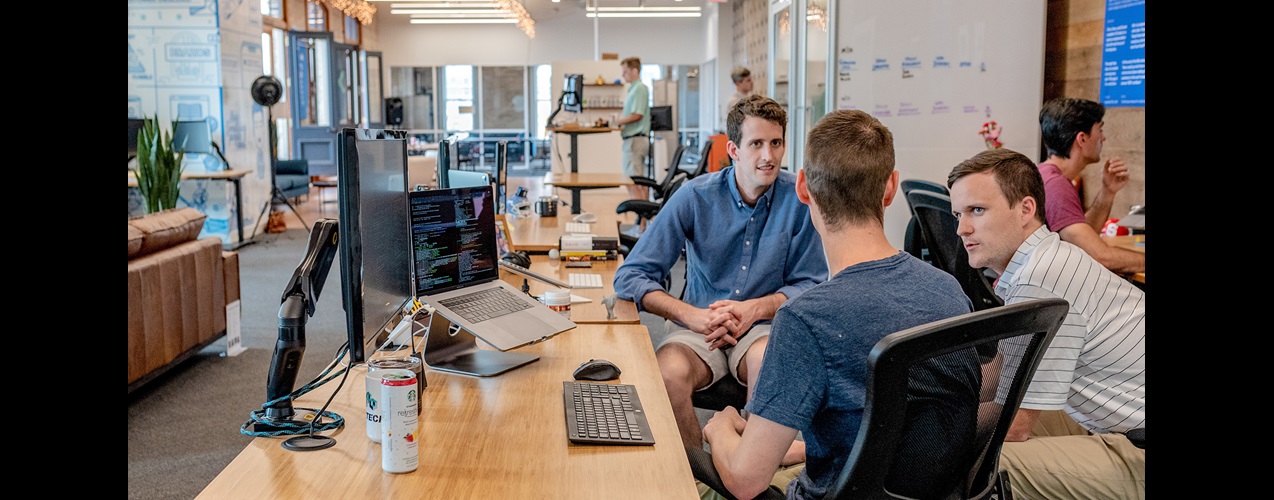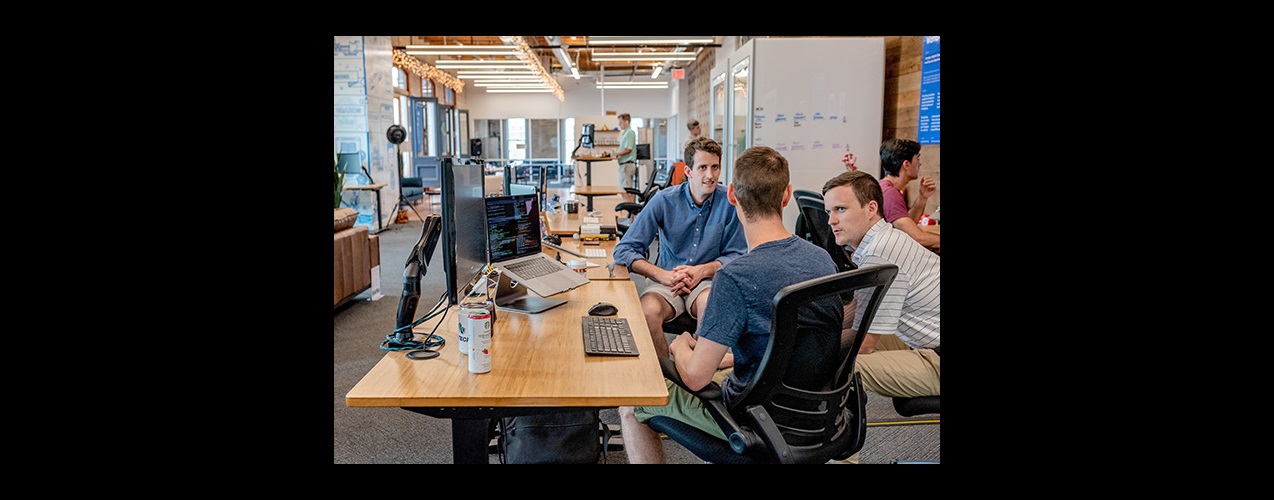
Engage Together: Tackling human trafficking
Organizations fighting modern slavery are using data analytics to co-ordinate vital prevention strategies, as Thomas H. Davenport explains.

Thomas H. Davenport
Professor of IT & Management, Babson College

Few law-abiding people would disagree that human trafficking is a critical social problem. This criminal activity involves forced, fraudulent or coerced labor, debt repayment, warfighting, sexual exploitation, or organ donation. In 2020 in the United States alone there were over 10,000 reported incidents of human trafficking and almost 17,000 reported victims – and the actual numbers are likely to be much higher. This modern form of slavery exists around the globe, with an estimated 40 million victims. In addition, it disproportionately affects women and children.
Human trafficking is a difficult problem to address or even quantify in detail. Some, though not the majority of, human trafficking involves moving people across international borders, and many incidents are perpetrated by family members or intimate partners. In order to address the issue, it needs to be brought out of the shadows, with granular, local information about the extent of the problem, who is suffering from it, and who is fighting it.
Bringing trafficking and attempts to curtail it out into the open is the primary activity of Engage Together, a nonprofit organization led by human rights lawyer Ashleigh Chapman. Since 2014, Engage Together has been working to identify local-level gaps in preventing and reducing human trafficking. Chapman says: “Human trafficking is a complex issue requiring comprehensive strategies. People were guessing about how best to address it. We needed to change the perspective to identifying what’s already being done and what isn’t.”
“Human trafficking is a complex issue requiring comprehensive strategies.”
- Ashleigh Chapman, President and CEO, Engage Together
Engage Together focuses on illuminating trafficking prevention and remediation data points in communities, with the goal of helping their leaders understand and address the problem. When the organization began working with communities, Chapman says that on average it took 18 months to simply unearth what efforts were taking place. She wanted it to take 18 minutes, so that Engage Together and its partners could spend far more time on actually solving the problem. This set her on a mission.
Working with volunteered advice from large companies like Deloitte and Anthem, Engage Together developed a plan for speeding up the process. The first part was to facilitate data gathering using an online survey that would go to multiple participants in a community – universities, doctors, dentists, homeless shelters, etc. Respondents now require only 17 minutes on average to complete the survey and describe what they are doing to address trafficking.
The second part of the plan was to visualize all the relevant data and make it broadly accessible to stakeholders. The goal was to communicate where communities are strong, where gaps need to be addressed, and who is at the table and who isn’t. The staff and volunteers had a vision of a comprehensive dashboard of trafficking resources. But, says Chapman: “This was a brilliant solution in principle, but we struggled with it in practice. The data, much of which was external and in different formats, was difficult to load. And people found it difficult to understand and use the tools we initially chose to load, analyze, and display the data – until Qlik came on board.”
Engage Together became acquainted with Qlik when it began working with Pomerol Partners, a multinational data analytics and visualization consulting firm and Qlik implementation partner. With donated licenses from Qlik’s Corporate Responsibility program, Engage Together and Pomerol were able to create an application that serves up customized dashboards for each community. Chapman enthuses: “Within 90 days we had the visualization we dreamed of.”
“Within 90 days we had the visualization we dreamed of.”
Each dashboard assesses and maps community resources relative to human trafficking. Using the dashboard, community resources can overcome the silos and fragmentation that previously characterized anti-trafficking programs, unifying their efforts and initiatives. The displayed information relates to such diverse interventions as prevention, rescue and exit, temporary shelter, survivor aftercare, legislative reform, training, outreach, and more. Engage Together uses Qlik analytics and reporting to distribute customized reports and embedded visualizations to each community.
The data comes from a variety of sources, including community survey responses, crime statistics, foster care statistics and homeless person counts. Before Qlik, loading the data into the system was a time-consuming process. Now, the data loads happen automatically (with some quality control reviews to ensure that formats or source locations haven’t changed) and are updated in near real-time. These improvements have allowed Engage Together to move through a process: from data gathering, to rendering visualizations, to insights and plans, and finally to the most important component – taking action.
The dashboards allow community and state leaders to see clearly where their current strengths lie and any gaps in their anti-trafficking efforts – from programmatic and demographic to geographic. These insights are driving program improvements as local nonprofits and organizations re-align their services to fill gaps. They’re also impacting legislative reforms in the communities where the reality of human trafficking’s presence hits home, with the dashboards highlighting vulnerabilities in systems of care that need to be shored up through legislation or funding priorities.
Beyond illuminating gaps in programs, the dashboards also showcase gaps in multi-sector engagement within communities. For example, when Engage Together began working with the state of Kansas, around 25 different organizations had some involvement with addressing human trafficking issues. The research and data-gathering process uncovered hundreds more, many of which sponsored duplicated efforts. With the dashboards, visualizations, and reports from Qlik, the different entities can now see each other, refine and combine their efforts, and bring new partners to the table. In direct response to the insights the dashboards provided, local Rotary Clubs rallied to learn about the gaps in program and service needs in their city. Following a six month deep-dive into the data with local leaders serving victims and survivors, they developed an action plan to engage all local Rotary Clubs across the area to help meet needs and fill gaps.
Similarly, in Wyoming, the dashboards revealed that over 87% of the anti-trafficking effort across the entire state was being carried out by nonprofits and government agencies, while there was almost no engagement from other sectors, such as faith-based, businesses, education, civic clubs, foundations and healthcare. As Cara Chambers, Director of the Division of Victim Services Office of the Wyoming Attorney General explains: “Although we are just in the initial phases of seeing what this data can do for us, we are beyond excited for its potential. This program is dynamic and comprehensive and easily portable. I see our task force being able to leverage this information to develop policy and solicit private sector engagement that has, as of yet, not been easily achieved.”
“Now we can extend our reach into many more communities and help many more victims.”
From Chapman’s perspective, the information provided through Qlik, its partners and her advisors has made an incredible difference in Engage Together’s ability to accomplish its mission. “We’ve been incredibly fortunate to have these great minds and great tools to provide visibility into the human trafficking problem and the solutions available for it,” she says. “Now we can extend our reach into many more communities and help many more victims. And we can bring many different types of organizations to the table to strengthen community action, support survivors, and prevent it in the first place by protecting those most vulnerable in each of our communities.”
Thomas H. Davenport
Thomas H. Davenport is a Distinguished Professor of Information Technology and Management at Babson College, visiting professor at Oxford's Saïd Business School, Fellow of the MIT Initiative for the Digital Economy, and senior advisor to Deloitte's AI practice. He writes for Harvard Business Review, Sloan Management Review, Forbes, and the Wall Street Journal.













